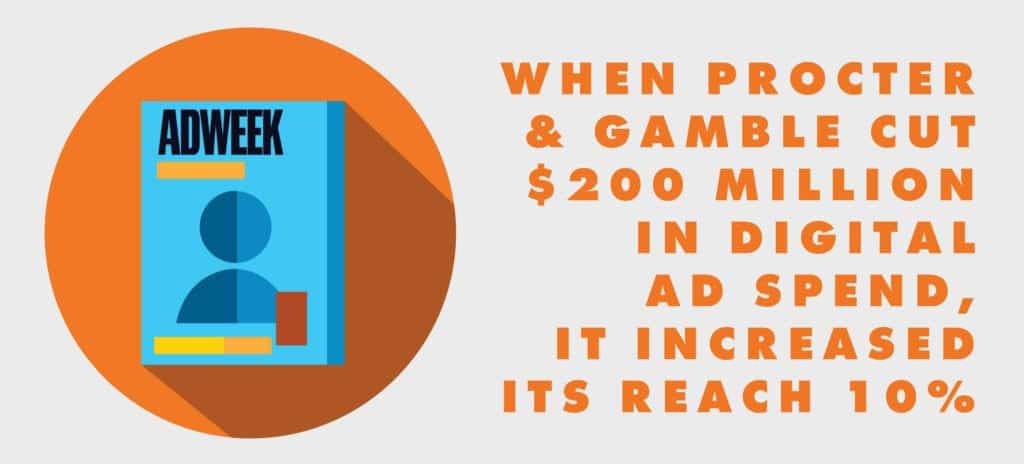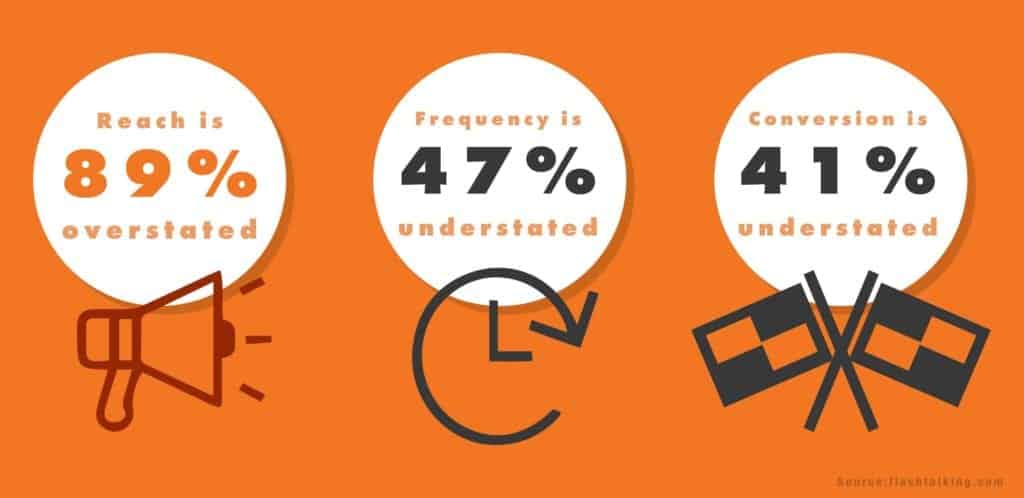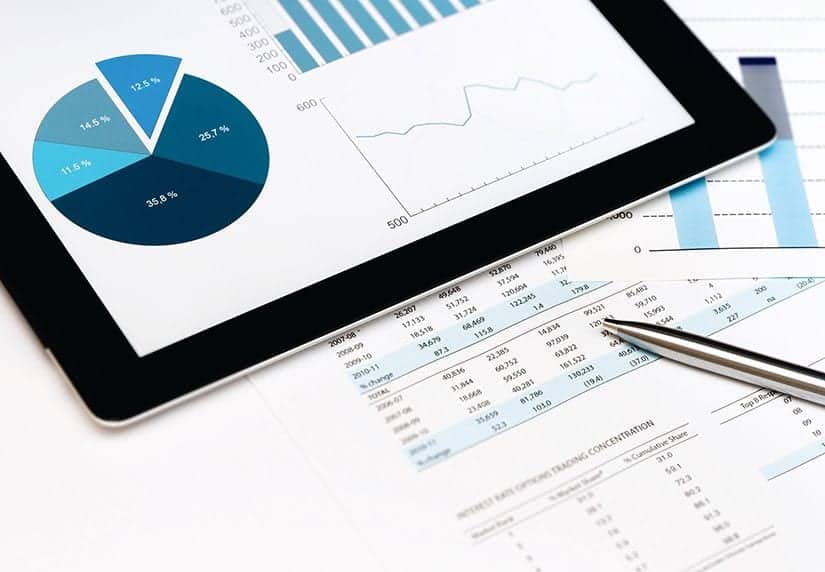5 min read
The Accountable Marketer’s Guide to Year 2020 Advertising Measurement Preparation
Dan Potts : Nov 18, 2019


By Michael Clark
As we move toward 2020, the digital media industry is in the midst of a walk-back of a historic over-promise: the ability of simultaneously delivering high precision in both ad-delivery and measurement. Now, there is a welcome correction upon us that will bring us back to the basics of measuring advertising effectiveness. One that trades the zeal for precision for the mundaneness of relative accuracy and a path toward incremental improvement of advertising over time. How did we arrive here?
- The digital media industry modeled the near totality of its promise too closely upon the success of one tactic (which turned out to be the most effective advertising ever invented): Google search ads. Google search ads are based on real current consumer need, which you only pay for when the consumer engages with the ad, and can be directly attributed to a sale. Very precise. No waste. Needless to say, the expectation that all other digital media methods to follow would provide similar accountability was misplaced (and over-promised).
- Advertisers learned that much of their banner ads were largely ineffective. Putting aside the massive problems of fraud, opaque ad-tech fees which drained working media budgets by as much as 50%, and contextual brand safety issues, most agency reporting on digital media is surprisingly still organized around impressions and CTR 20-years into the digital media revolution. And, as we have seen, impression delivery and CTR does not correlate to purchase intent or sales.

- We learned that Multi-Touch Attribution, the Easter Bunny and the Loch Ness Monster have something in common: they are not real. Sure, there are modeling equivalents of grainy hand-held film footage of Bigfoot walking through a forest in the Pacific Northwest (or maybe it’s a guy in a fur-suit), but the usefulness of these approaches is open to significant question. The main platforms where consumers spend most of their time (Google, Facebook, Amazon) do not share their identity data. These models, therefore, tend to be correlative, limiting the conclusions that you can draw from them.
- Privacy concerns have forced industry maturity. Putting aside the leading headlines associated with the unregulated selling of identity (Cambridge Analytica), the emergence of GDPR and the California Consumer Protection Act, and the spectacle of leading digital media executives testifying before congress, the freewheeling access to consumer data is coming to a close. There are many sign-posts (and lots of investment) bringing about the post-cookie world:
- Apple’s ITP protocols eliminate persistent cookie tracking
- Google no longer shares ID’s
- Web protocols themselves are evolving to a more decentralized model that make user privacy and user data ownership a standard part of web conventions
- New models transferring data ownership to individuals are emerging via blockchain technology, such as BAT (Basic Attention Token).
- Even the digital marketing industry itself, via the IAB, is developing new post-cookie standards
What does this all mean for you, the seasoned accountable marketing executive, as you plan for 2020? Here’s a few considerations you should plan around in order to become a self-sufficient, highly effective marketer in 2020 and beyond:
1. Build Your Own Data Assets
Invest in a CDP (Customer Data Platform) and build out your own proprietary audience segments. This may mean not relying on agencies to do the essential work of audience definition with little to no oversight. It may also mean controlling the process by which audiences are defined and improved over time.
Audience Planning is a critical strategic function which forces organizations to think through their approach to building 1st-party data assets, who to partner with to obtain highly productive 2nd-party data assets, and which 3rd-party sources are remotely worthwhile. In other words, it’s a must if you’re looking to compete effectively.
2. Invest in Marketing Automation
Marketing automation is about providing a great consumer experience, at scale. It matches known-state consumers with highly relevant messaging that enhances customer satisfaction and grows life-time value: two things that you can measure without cookies.
Investment in Marketing Cloud platforms to aid in scaling better consumer experiences has been a marketing investment trend in 2019 and will continue to be a growing trend in 2020. If you are not looking at marketing automation via marketing cloud platforms, you should be.
3. Embrace Machine Learning and AI
The vast amounts of data generated by modern marketing has moved the discipline out of the realm of human scale endeavors. The challenge that most marketers have is determining where to begin. We would suggest starting with individual ad unit and copy performance in paid search and social media (creative focus). This area is relatively self-contained and provides an excellent opportunity to get your feet wet.
You can then move up the ladder of sophistication from media-auction bid management (media focus) all the way up to marketing mix modeling, and even product launch analysis (market focus). The applications are endless, it’s a matter of determining where machines are best utilized within your organization (repetitive analysis tasks, identifying trends in vast data stores) versus humans (planning, idea generation, concept application, etc).
Your agency should already be applying machine learning to your business. You can begin by understanding how those work, then gradually prioritize from there. Applying machines for creative effectiveness, media optimization, audience and market analysis, and measurement are all highly active practices moving into 2020. That means your plan needs to get in on it too.
4. Test Into the Post-Cookie Future
It’s no surprise that the cookie-based digital media order is collapsing. You’ve probably already seen deterioration in the performance of your e-commerce retargeting campaigns, and in your ability to target audiences based on 3rd-party data (in-audience composition). And it’s safe to say this will not be improving.
The truth is there is no current viable alternative to cookie tracking that provides comparable reliable results for advertisers looking into metrics for measuring ad campaign effectiveness. Industry pundits and vendors do not seem to want to say this because it risks making them appear unsmart for not having an answer. It is, however, the truth. This is why you need to swim toward the light and prepare your organization for cookie-related measurement deterioration.
What are smart marketers doing? They are Investing in building first-party data assets from which to model audience targeting and testing modeled solutions around which to build delivery, tracking and measurement. This involves settling on a probabilistic model that works well for your organization after a validation period.
It’s also a good idea to partner with Adobe or Salesforce to gain access to data and device graphs that no single marketer can build on their own. Adobe’s Open Data Initiative, in partnership with Microsoft and SAP, is an example of a valuable asset that these partnerships can provide for marketers. The unified data wellspring that Adobe, Microsoft, and SAP can bring to the table will attract marketers seeking to create new valuable customer connections. You’ll need these types of partnerships to effectively compete, as cookies continue to fade as a source of identity.

5. Focus on Outcomes
Try not to be distracted by any metric that is not LTV:CAC or purchase intent. Nobody wrings their hands over television commercial view completion rates or view time percentages. So don’t spend insane amounts of time looking at tactical sub-metrics just because you can (video views, followers, likes, page views, % completion, etc.)—that’s what machine learning is for. Your job is to put in place a measurement system that holds advertising accountable to what matters in the C-suite (the C-suite doesn’t care about CTR’s).
A focus on marketing outcomes, is also why marketing cloud platforms and CDP’s are receiving more investment moving into 2020, particularly ones that can ingest organizational financial performance data as well as marketing data.
I know what you’re thinking, this all sounds expensive and time-consuming. But what may truly cost you more is continuing to accept plans with an 89% over-statement of your reach, a 47% under-statement of your frequency, and dropping further behind your competitors who are already moving ahead in these areas. So consider building these 5 practices into your 2020 planning, and you’ll be in a stronger position to compete.

You can do it. You must do it.
Got Marketing Cloud? Read about BCM’s Journey from early digital agency leaders to Marketing Cloud activation experts.

Yes, You Can Measure the ROI of Social Media Influencers
From the apple-pushing snake of Adam & Eve to Leave it to Beaver’s Eddie Haskell, the world has been blessed with a rich lineage of influencers who...

